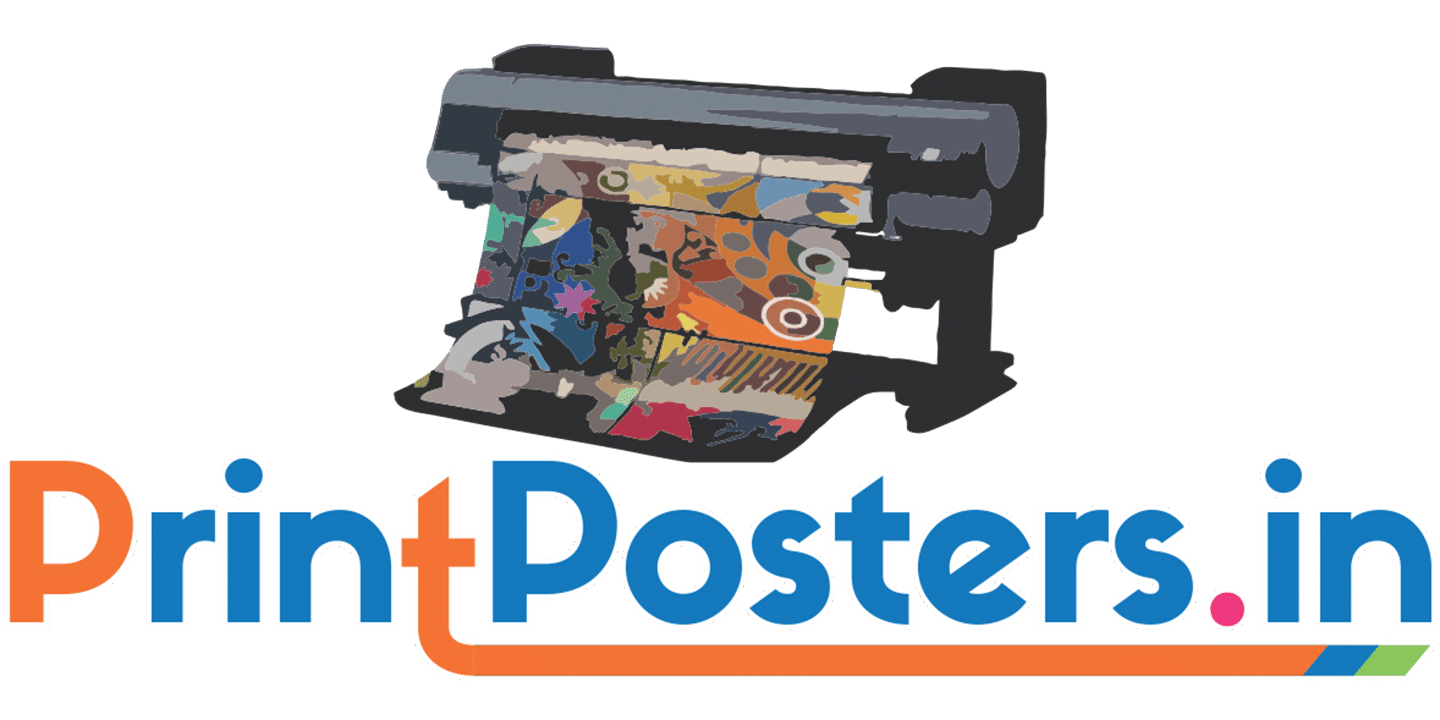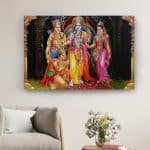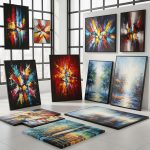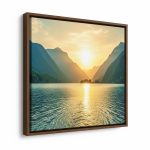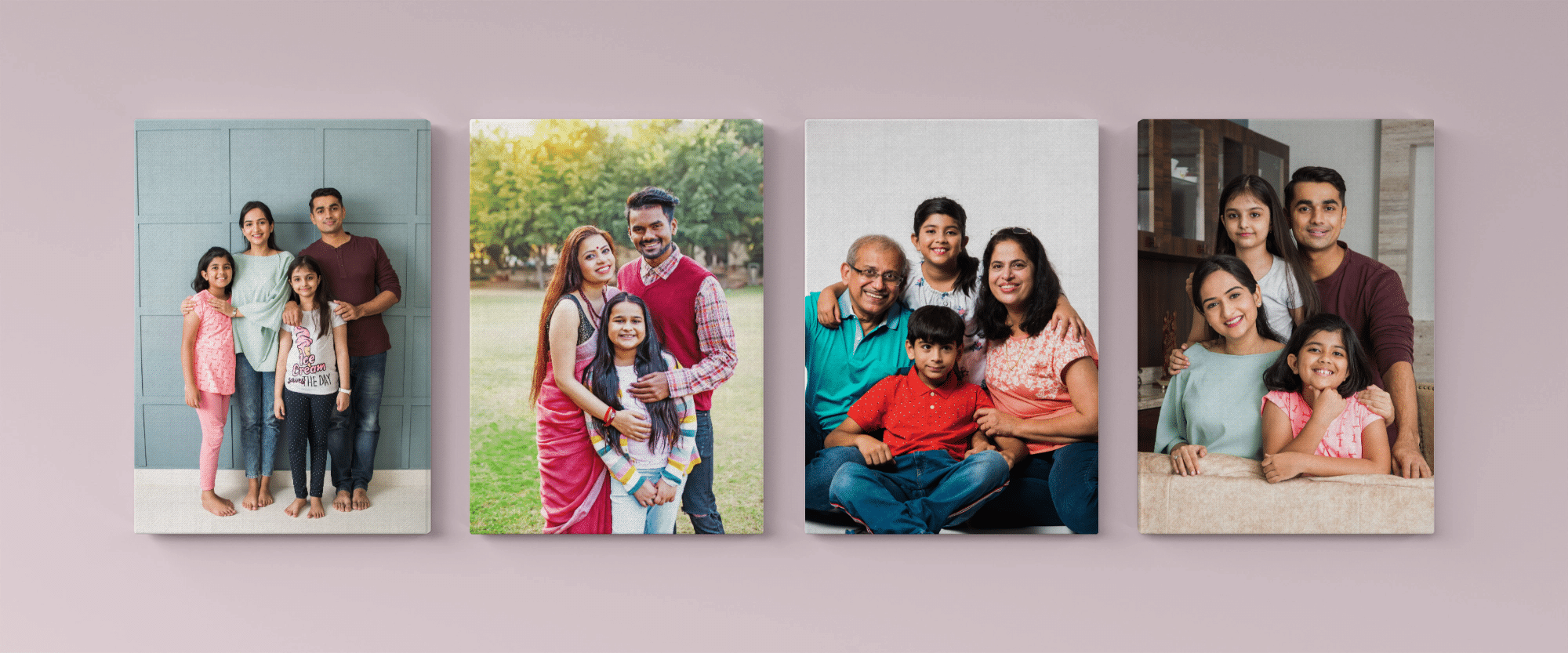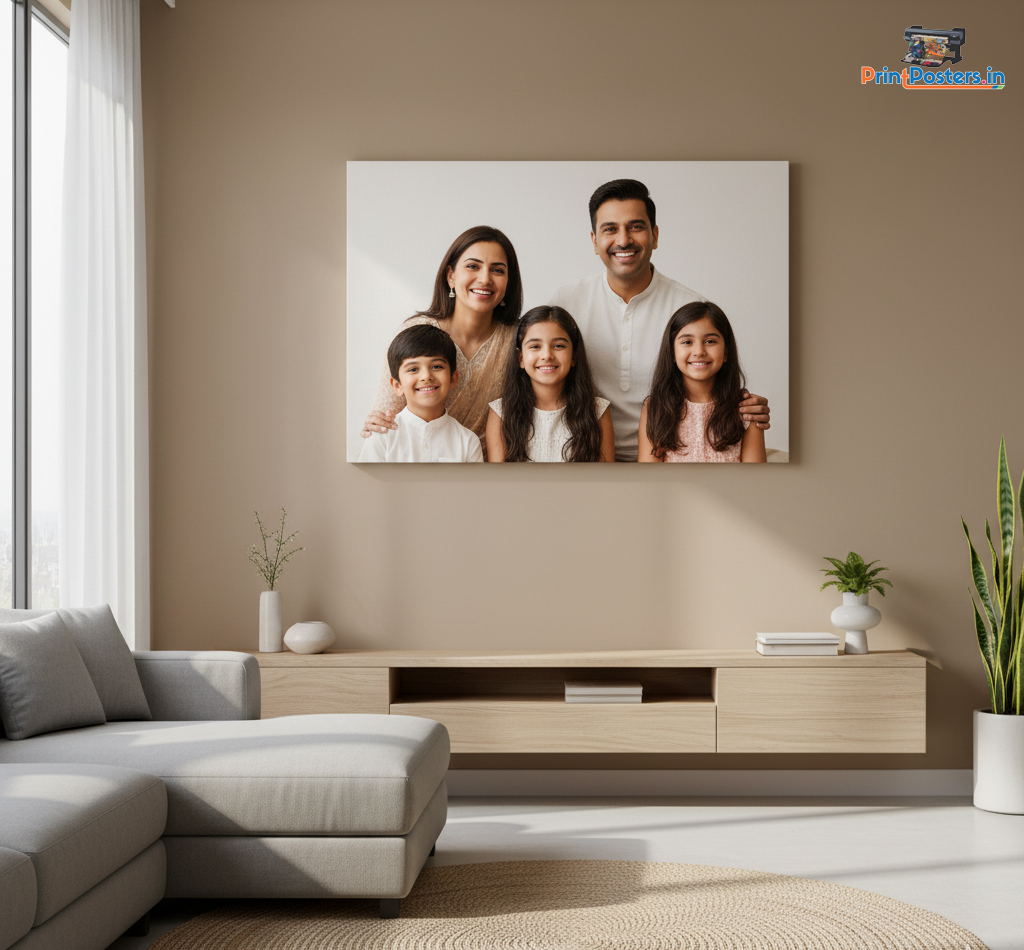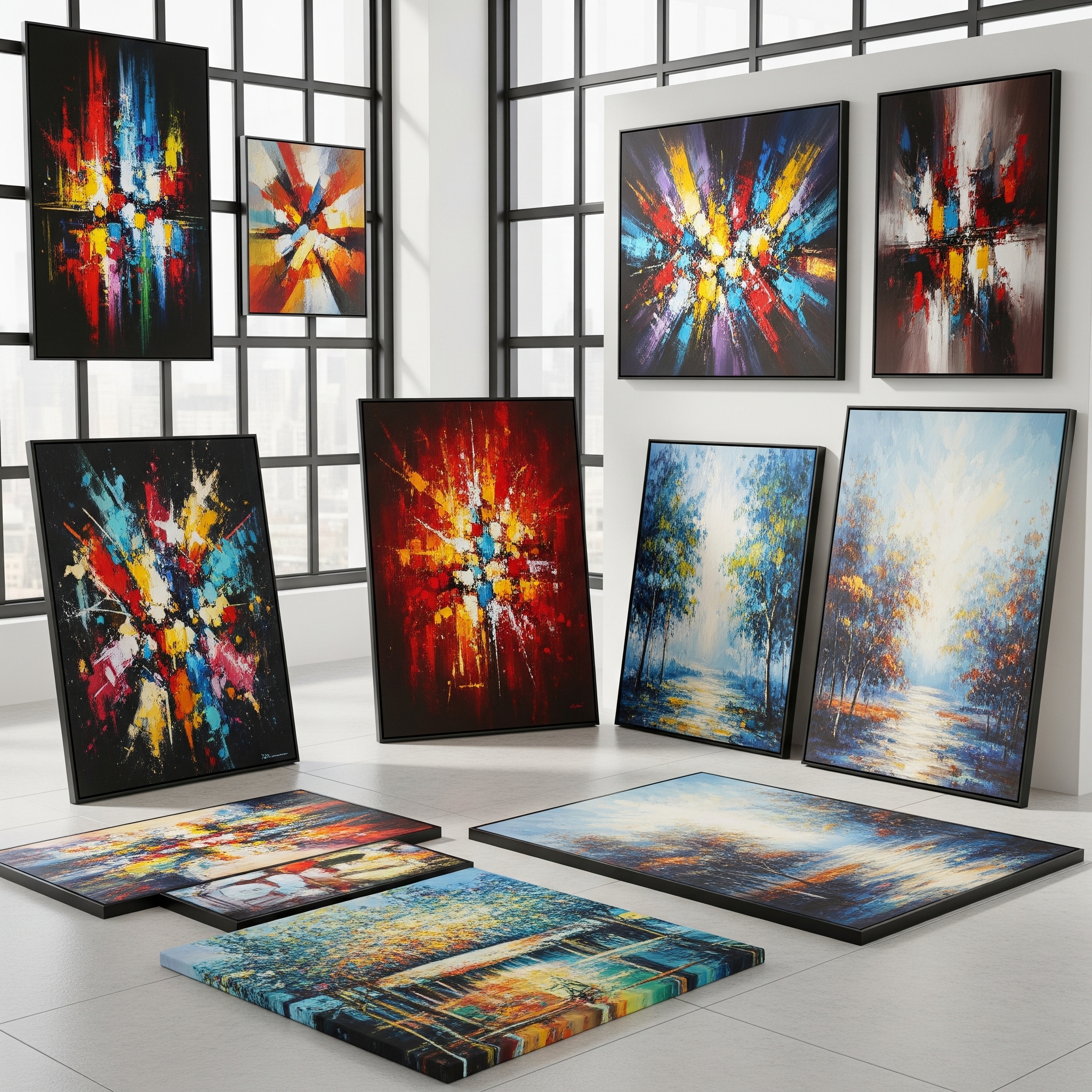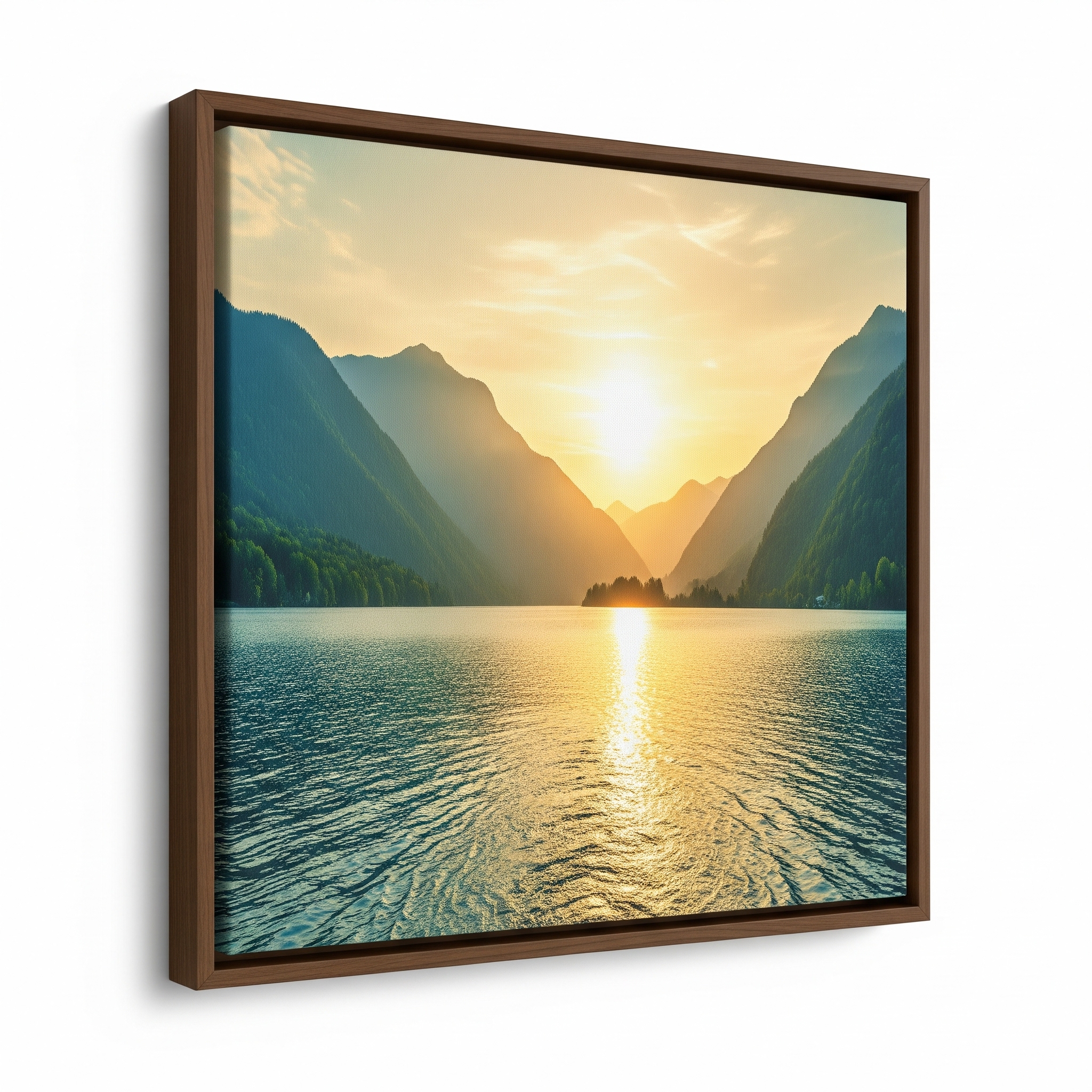The desire to personalize our living and working spaces is stronger than ever, especially in a vibrant metropolis like Delhi and its surrounding National Capital Region (NCR). Moving beyond mass-produced decor, canvas prints offer a sophisticated and deeply personal way to bring your walls to life. Whether showcasing cherished family photographs, breathtaking travel captures, or unique digital artwork, canvas transforms pixels into tangible art, adding warmth, personality, and style to any room. They also serve as thoughtful, customised gifts that resonate with personal connection.
However, venturing into the world of canvas printing can feel overwhelming. A quick search reveals a multitude of options, from large online platforms delivering nationwide to specialized local studios dotted across Delhi, Gurgaon, and Noida. Terms like “Giclée,” “GSM,” and “gallery wrap” abound, making it challenging to know what truly matters for quality and aesthetics.
This guide is designed to be your trusted companion, demystifying the process of ordering canvas prints in the Delhi region. We’ll explore the different styles available, break down the key factors that determine print quality, introduce reliable providers serving Delhi NCR, walk through the ordering process, and offer essential care tips. By the end, you’ll have the knowledge and confidence to choose the perfect canvas print to elevate your space or delight someone special.
Decoding Canvas Prints: Your Style Options Explained
Before diving into quality specifics, understanding the fundamental style choices is crucial. How your canvas print is finished and presented significantly impacts its final look and how it integrates into your decor.
Finish: Rolled vs. Stretched Canvas
The most basic choice is whether you want just the printed canvas fabric or a ready-to-display piece.
- Rolled Canvas: This option provides the printed canvas fabric itself, delivered rolled up, typically in a tube. The primary advantage is flexibility – you can take it to a local framer in Delhi NCR to choose a custom frame that perfectly matches your decor or existing artwork. It’s an ideal choice if you have a specific framing vision or enjoy a DIY approach. Several online providers, such as PrintPosters.in, explicitly offer rolled canvas as a more budget-friendly starting point.
- Stretched Canvas: Here, the canvas fabric is stretched tautly over a wooden frame, known as stretcher bars. This creates dimension and prepares the print for display. Stretched canvas typically comes in two main styles based on how the edges are handled:
- Gallery Wrap: This is the most popular style for a modern, ready-to-hang look. The canvas wraps entirely around the sides of the stretcher bars and is secured neatly at the back, hiding the staples or fasteners. This creates a clean, three-dimensional effect where the artwork appears to continue around the edges. It doesn’t require an additional outer frame, mimicking the presentation often seen in art galleries and museums. Providers like PrintPosters.in offer gallery-wrapped options.
- Studio Wrap (or Non-Gallery Wrap): In this style, the canvas is also stretched over a frame, but the staples or fasteners used to attach the canvas might be visible on the sides of the frame. Studio wraps are generally intended to be placed inside a traditional picture frame, which would cover the sides and staples. While less common as a standalone, ready-to-hang option, some may prefer this look if the visible staples align with a specific rustic or industrial aesthetic.
Edge Styles for Gallery Wraps: The Finishing Touch
When choosing a gallery wrap, the treatment of the canvas edges is a critical detail. How the image transitions (or doesn’t) around the sides affects the overall presentation, especially if your image has important elements near its borders.
- Image Wrap (Natural/Folded Wrap): The most straightforward approach, where the main image itself is extended and wrapped around the sides of the frame. This creates a continuous, seamless look. However, a crucial consideration is that any part of the image wrapped around the edge will not be visible from a direct front view. If your photo has key subjects or details very close to the edge (like faces in a group shot or text), they might get partially cut off from the front.
- Mirrored Wrap: To preserve the entire image on the front surface while still having a printed edge, the mirrored wrap duplicates the outer border (typically 0.5 to 1.5 inches, depending on frame depth) of your image and mirrors it onto the canvas sides. This creates a visually interesting effect on the edges while ensuring no part of the original composition is lost from the front view. It’s an excellent choice when edge details in the original photo are important.
- Solid Colour Edge (Black/White/Custom): Another way to keep the full image on the front is to have the canvas edges printed in a solid colour, most commonly black or white, though custom colours might be possible. This creates a clean, defined border around the front-facing image and can provide a sharp contrast that makes the main picture pop. Black edges often lend a classic, bold feel.
- Stretched/Pixel Stretch Edge: This technique involves taking the outermost row of pixels from your image and digitally stretching them down the sides of the canvas. This results in a blurred or abstract pattern on the edges, derived from the image’s own colours, while keeping the full, unstretched image visible on the front.
The choice between these edge styles isn’t just aesthetic; it’s functional. If your image composition allows for it, an image wrap offers seamless continuity. But if critical elements are near the edges, opting for a mirrored or solid color wrap is essential to avoid disappointment. Understanding this distinction prevents the common pitfall of ordering a wrap style that inadvertently crops important parts of your cherished photo.
Format & Layout: Beyond the Single Print
Canvas art isn’t limited to single rectangular images. The market caters to more creative and personalised wall displays.
- Single Panel: The timeless, classic format where one image is printed on one canvas panel. Perfect for showcasing a standout photograph or artwork.
- Split Canvas (Diptych, Triptych, Polyptych): A single image is divided and printed across multiple canvas panels (two, three, or more) arranged together to form the complete picture. This creates a dramatic, modern art effect, adding visual interest and covering larger wall spaces effectively.
- Canvas Collages: Ideal for telling a story or grouping related memories, this format allows you to combine multiple photographs onto a single canvas print.PrintPosters.in powers OnlineCollageMaker.com for this purpose.
- Custom Shapes & Sizes: While standard rectangular and square sizes are widely available, many providers offer extensive size ranges and the possibility of custom dimensions to perfectly fit a specific niche or create a unique display. PrintPosters.in , indicates flexibility with sizing.
The availability of split canvas and collage options reflects a growing desire among consumers to move beyond simple photo reproduction towards creating curated, multi-image narratives and more complex wall art arrangements.
Framing Options: To Frame or Not to Frame?
While gallery wraps are designed to be frameless, adding an outer frame can enhance the presentation or tie the canvas into existing decor.
- Floater Frames: Specifically designed for gallery-wrapped canvases, these frames leave a small gap between the edge of the canvas and the inner edge of the frame, creating the illusion that the canvas is “floating” within it. This adds a sophisticated, contemporary finish without covering the wrapped edges of the canvas. PrintPosters.in is one provider offering floater frames.
- Traditional Frames: Standard picture frames can be used with studio-wrapped canvases (to cover the staples) or even with gallery wraps if a more traditional or ornate look is desired.
Quality Checklist: What Separates Premium Canvas Prints?
Not all canvas prints are created equal. Several technical factors contribute to the final quality, durability, and visual impact of your print. Understanding these can help you evaluate different providers and ensure you’re getting value for your money.
The Canvas Material: The Foundation of Your Print
The fabric itself plays a significant role in the print’s look, feel, and longevity.
- Types: Common materials include:
- Cotton Canvas: Often favoured for fine art reproductions due to its traditional texture and excellent ink absorption.
- Polyester Canvas: Known for its durability, strength, and potentially lower cost. It can be very smooth. Qikink uses PolyCanvas. Ottertex specializes in 100% polyester waterproof canvas.
- Cotton-Polyester Blends: Aim to combine the texture and print quality of cotton with the durability and stability of polyester. C****sC***p mentions using a cotton blend. Providers like PrintPosters.in specify using high-GSM cotton canvas , P****n.in uses cotton canvas , while M**aw*******t lists a variety of polyester, cotton, and blended options.
- GSM (Grams per Square Meter): This metric is a crucial, quantifiable indicator of the canvas’s weight and thickness. A higher GSM number generally signifies a heavier, thicker, and more durable canvas, contributing to a premium feel. For context, standard office paper is around 80-100 GSM , while good quality flyers might range from 150-300 GSM. High-quality canvas prints typically use materials with significantly higher GSM values. For instance, PrintPosters.in uses 400 GSM canvas , and P****n.in uses 340 GSM. Ottertex waterproof canvas is listed at 380-390 GSM. M**aw*******t listed codes (W380, T345, T400, etc.) likely correspond to GSM, indicating a range of substantial thicknesses. Looking for a higher GSM (e.g., 300+) is a good rule of thumb when seeking quality.
- Acid-Free/Archival: For prints intended to last for generations, ensure the canvas is acid-free. Acids in materials can cause them to yellow and degrade over time. Using archival-quality, acid-free canvas helps preserve the print’s integrity and appearance. PrintPosters.in and P****n.in both specify using acid-free or archival-grade canvas.
Printing Prowess: Digital vs. Giclée
The printing technology used directly impacts color accuracy, detail, and longevity.
- Standard Digital Printing: This generally refers to basic inkjet printing. While suitable for many applications, it might use fewer inks (often a 4-colour CMYK process) and potentially dye-based inks, which can result in a smaller color range and lower fade resistance compared to higher-end methods.
- Giclée Printing (Fine Art/Archival): Pronounced “zhee-clay,” this term (from the French verb “gicler,” meaning “to spray” or “to squirt”) signifies a superior standard of inkjet printing specifically for fine art reproduction. While not strictly regulated, true Giclée printing generally adheres to several key criteria:
- High Resolution: The printing process requires a high-resolution digital file (minimum 300 Dots Per Inch, or DPI, is often recommended) to capture fine detail.
- Pigment-Based Inks: Unlike standard dye-based inks, pigment inks consist of microscopic solid particles of colour suspended in a liquid carrier. These inks offer vastly superior lightfastness and archival longevity.
- Archival Substrate: The printing must be done on archival-quality, acid-free paper or canvas.
- Advanced Printer: Typically utilises wide-format inkjet printers with an expanded ink set (often 8 to 12 different colour cartridges, including lighter shades and sometimes additional colours like green or orange) to achieve a wider colour gamut and smoother tonal transitions. Providers like PrintPosters.in explicitly state they use 10-color Giclée printing with pigment inks.
Colour, Detail & Longevity: The Visible Differences
These factors determine how vibrant, sharp, and long-lasting your print will be.
- Ink Type: As mentioned, pigment-based inks used in Giclée printing are the gold standard for longevity, offering fade resistance estimated at 100 to 200 years under proper conditions, compared to potentially much shorter lifespans for dye-based inks. PrintPosters.in use pigment inks.
- Color Gamut & Accuracy: Printers using more inks (e.g., 8-12 colors vs. 4-6) can reproduce a wider spectrum of colors (gamut) with greater accuracy and subtlety. This results in richer, more vibrant prints that are truer to the original image. PrintPosters.in highlights their 10-color process for achieving almost 98% Pantone shade coverage on high-resolution photo prints, suggesting a high degree of color fidelity potentially applicable to their canvas prints as well. P****n.in also leverages a 10-color system.
- Resolution (DPI): Dots Per Inch measures the density of ink dots laid down by the printer. A higher DPI translates to finer detail and sharper images. While the source image resolution is critical (providers recommend minimums like 100 DPI or 150+ DPI , with 300 DPI ideal for Giclée ), the printer’s capability also matters. PrintPosters.in mentions using 4800 DPI printers for photo prints ; while the final print DPI on canvas won’t be 4800, this high printer resolution indicates the potential for very fine detail reproduction.
- Fade Resistance: This is crucial for preserving your investment, especially in sunny Delhi homes. It’s primarily determined by the ink type (pigment inks being far superior) and the presence of UV-protective coatings. Providers using archival pigment inks often claim lifespans exceeding 100 years.
Protective Coatings: Shielding Your Art from the Elements
Given Delhi’s climate with strong sunlight, humidity during monsoons, and ambient dust, a protective coating or varnish is highly recommended, though not always standard.
- Purpose: These clear layers act as a barrier, safeguarding the print surface from various threats:
- UV Rays: Prevent fading and colour degradation caused by sunlight exposure. UV light causes photochemical breakdown of pigments.
- Moisture: Protect against humidity, accidental splashes, and allow for gentle cleaning.
- Physical Damage: Guard against dust, fingerprints, minor scratches, and airborne pollutants.
- Types: Coatings are typically water-based varnishes or lacquer sprays applied after printing. They come in different finishes:
- Gloss: Enhances colour depth and vibrancy, adds a shiny finish.
- Satin/Lustre: Offers a subtle sheen, balancing vibrancy with reduced glare.
- Matt: Minimises reflections and glare, providing a non-shiny, subdued look, often popular for black and white images.
- UV Resistance: Look for coatings specifically formulated with UV inhibitors to block damaging rays. Products like Hahnemuhle protective spray or Krylon UV-Resistant Clear Coating offer this feature. Specialised canvases like Ottertex also incorporate UV resistance.
- Water Resistance: This feature adds durability and makes cleaning easier. PrintPosters.in and P****n.in explicitly state their canvas prints are water-resistant or waterproof. PermaJet varnishes are water-resistant. Waterproof canvas materials like Ottertex are also available.
The presence of a quality protective coating significantly enhances the print’s longevity and resilience, making it a worthwhile feature to seek out, especially given the environmental conditions in Delhi NCR. If a provider doesn’t explicitly mention coatings, it’s advisable to inquire.
The Foundation: Frame & Stretching Quality
For stretched canvases, the underlying frame and how the canvas is attached are vital for structure and longevity.
- Frame Material: Solid wood, particularly pine, is the preferred material for high-quality stretcher bars due to its strength, stability, and resistance to warping. PrintPosters.in uses pinewood frames.
- Frame Thickness (Depth): This refers to how far the canvas will protrude from the wall. Common depths include 0.75 inches (standard) and 1.5 inches (thicker profile), with some providers offering options up to 2.5 inches. PrintPosters.in offers depths from 0.75″ to 1.25″ Thicker frames create a more substantial presence on the wall.
- Stretching Quality: The way the canvas is stretched onto the frame matters significantly. Hand-stretching by experienced professionals is widely considered superior to machine stretching. Machines can sometimes over-stretch the canvas, potentially leading to hairline cracks in the ink or image surface, whereas hand-stretching allows for careful judgment to achieve the perfect tension. A well-stretched canvas should be perfectly taut across the frame surface, with no sagging, rippling, or creasing. The staples on the back should be neat and evenly spaced for secure, long-lasting attachment. The corners should be folded neatly.
In essence, a truly premium canvas print results from a synergistic combination of these factors: a high-quality, archival canvas base (indicated by material type and high GSM), advanced Giclée printing with multi-color pigment inks for accuracy and longevity, appropriate protective coatings for environmental resilience, and expert hand-stretching onto a sturdy, solid wood frame. While budget options exist, they likely involve compromises in one or more of these critical areas, potentially affecting the print’s appearance, durability, and long-term value.
Your Canvas Connection: Top Providers for the Delhi Region
Armed with knowledge about styles and quality, let’s explore some of the key providers serving the Delhi NCR market. This includes major online players who deliver across India and local print shops within Delhi, Gurgaon, and Noida.
Online Leaders Delivering to Delhi
These companies offer the convenience of online ordering and delivery directly to your doorstep in Delhi NCR. They often provide sophisticated customisation tools and cater to a wide range of needs.
- PrintPosters.in: This provider positions itself strongly on quality and technology.
- Technology: Uses 10-color Giclée printing with pigment-based inks.
- Material: Employs a premium 400 GSM acid-free cotton canvas.
- Framing: Offers gallery wraps on pine wood frames (0.75″-1.25″ depth), rolled canvas, and floater frames. Frames come ready-to-hang with pre-installed hooks.
- Coatings: States prints are UV and water-resistant.
- Customization: Provides a vast selection of standard sizes (square, portrait, panoramic), custom size options, and collage creation via OnlineCollageMaker.com. Features a 3D preview tool.
- Warranty: Offers a lifetime warranty and a 100% satisfaction guarantee, though specific terms for the warranty aren’t fully detailed.
- Shipping: Provides free standard shipping across India (estimated 5-7 working days) and faster paid shipping (3-5 working days), reliably serving Delhi.
- Pricing: Competitive, with an 8×8″ gallery wrap starting around ₹480. Offers a “Best Price Guarantee” and bulk discounts.
- P****n.in: Focuses on user-friendly online creation and quality materials.
- Technology: Utilizes large-format UV inkjet printers with an Epson 10-color system.
- Material: Uses a 340 GSM archival-grade textured cotton canvas.
- Framing: Provides gallery wraps (mirror or image edge styles) on pinewood frames (0.75″ or 1″ depth), mounted options, and rolled canvas. Frames are ready-to-hang.
- Coatings: Prints are stated to be waterproof.
- Customization: Offers sizes from 8×8″ up to 55×55″, custom sizes on request, various orientations, and an online collage tool. Features image resolution pre-checks.
- Warranty: Provides a lifetime warranty on their 340 GSM canvas, claiming fade-proof results for over 100 years.
- Shipping: Dispatches orders within 48 hours. Offers free standard shipping to Delhi (4-5 working days) and paid priority shipping (2-3 working days). Cash on Delivery (COD) is available.
- Pricing: Very competitive starting prices, often featuring significant discounts (e.g., 8×8″ starting around ₹199 promotional).
- C****sC****p.in: A popular platform known for aggressive pricing and a wide product range.
- Technology: Mentions using HP Certified Printers with Latex/Chromaluxe inks and “3D Canvas Printing” technology, but doesn’t explicitly confirm Giclée standards across all products.
- Material: Refers to using a “high-quality cotton blend canvas” and “roll canvas material,” but specific GSM is not provided.
- Framing: Offers rolled canvas, single panel, and split canvas formats. Mounted options imply framing, but frame material isn’t specified. Various frame styles are available.
- Coatings: Protective coatings are not explicitly mentioned in the reviewed materials.
- Customization: Extensive size range (8×8″ to 54×54″), custom size input, online collage maker, and image effects (Sepia, Grayscale) are available. Accepts various file formats (requires min 100 DPI, RGB color profile).
- Warranty/Guarantee: Promotes a “Lowest Price Guaranteed” and a 100% compensation guarantee. Emphasizes reliability based on 10+ years in business.
- Shipping: Delivers anywhere in India. Offers free shipping on orders over ₹199. Mentions “Lightning Fast Shipping” and potentially same-day delivery to many cities, but specifics for canvas prints to Delhi need verification.
- Pricing: Extremely competitive, with promotional starting prices as low as ₹143. Frequent sales and offers like Buy-One-Get-One (BOGO).
- P****o.in: A well-known print chain with both online ordering and physical stores (potentially including locations in Delhi NCR).
- Technology: Specific printing technology is not detailed.
- Material: States they use only one type of canvas material for consistency, but details (type, GSM) are not provided.
- Framing: Offers various formats including Gallery Wraps, MDF Wraps, and Canvas Photo Frames. Frame material specifics are not mentioned.
- Coatings: No coatings are mentioned; advises limiting sunlight and moisture exposure.
- Customization: Offers standard sizes for gallery wraps (9×12″ to 27×36″), with custom requests possible via contact. Provides split canvas and combo options. Prefers JPEG images at 150+ DPI.
- Warranty/Guarantee: Provides a 100% satisfaction guarantee (reprint or credit if issues reported within 30 days).
- Shipping: Offers standard shipping (2-7 business days) and express options (within 4 hours or same-day delivery). Shipping costs to Delhi are not specified but delivery is likely available given their network.
- Pricing: Mid-range examples: Eco Canvas Poster starts ~₹339, Gallery Wrap starts ~₹893.
This overview reveals a spectrum in the online market. Some providers like PrintPosters.in compete by offering detailed, high-quality specifications (Giclée/multi-color printing, high GSM cotton canvas, protective coatings, lifetime warranties) online.
Comparative Overview of Major Online Canvas Print Providers for Delhi
| Feature | PrintPosters.in | P****n.in | C****sC****p.in | P****o.in | M**aw****rint.com | Si*****th Photographix |
|---|---|---|---|---|---|---|
| Printing Technology | 10-color Giclée (Pigment Inks) | 10-color UV Inkjet (no such a machine is available) | Latex/Chromaluxe Inks, “3D Printing” | Not Specified | “Best Methods”, Archival Quality Mentioned | Giclée (Pigment Inks) |
| Canvas Material (Type/GSM) | 400 GSM Cotton (Acid-Free) | 340 GSM Cotton (Archival) | Cotton Blend (GSM Not Specified) | 1 Type (Details Not Specified) | Various Cotton/Poly/Blends (e.g., W380, T345) | Wide Range Archival/Non-Archival |
| Frame Details | Pine Wood (0.75″-1.25″), Gallery Wrap, Rolled, Floater | Pinewood (0.75″, 1″), Gallery Wrap (Mirror/Image), Rolled, Mounted | Rolled, Single, Split, Mounted (Material N/S) | Gallery/MDF Wraps, Frames (Material N/S) | “Ready-to-use” (Details N/S) | Framing Service Offered (Options N/S) |
| Protective Coatings | UV & Water-Resistant | Waterproof | Not Specified | Not Specified (Advise care) | Optimizer Coating, Varnish Option | Not Specified (Archival focus) |
| Key Customizations | Custom Sizes, Collages, 3D Preview | Custom Sizes, Collages, Res Check | Custom Sizes, Collages, Effects | Custom Sizes (via contact), Splits | Custom Orders via Contact | Custom Sizes Likely, Restoration |
| Warranty/Guarantee | Lifetime Warranty, 100% Satisfaction | Lifetime Warranty (Canvas) | Lowest Price Guarantee, 100% Compensation | 100% Satisfaction (30 days) | Not Specified | Not Specified (Client Testimonials) |
| Starting Price Example | ~₹267 (8×8″ Gallery Wrap) | ~₹199 (8×8″ Promo) | ~₹143 (Smallest Promo) | ~₹893 (Gallery Wrap) | ₹120-180 / sq ft | Not Specified |
| Est. Delhi Delivery (Std) | 4-5 Working Days (Free) | 4-5 Working Days (Free) | Varies (Free > ₹199) | 5-7 Business Days | Not Specified | Not Specified |
(N/S = Not Specified in reviewed sources. Prices are indicative starting points and subject to change/promotions.)
Local Print Hubs: Exploring Delhi NCR Options
For those who prefer a local touch, faster turnaround, or in-person consultation, Delhi NCR boasts numerous printing services.
- What to Ask Local Shops: A significant challenge with local providers is that online listings often lack detailed specifications. While many offer “canvas printing,” the quality can vary immensely. It’s crucial to inquire directly about:
- Printing technology (Is it Giclée? How many inks?)
- Ink type (Pigment-based for longevity?)
- Canvas material (Cotton? Blend? GSM weight? Acid-free?)
- Protective coatings (UV? Water-resistant? Varnish options?)
- Framing (Stretcher bar material? Thickness? Hand-stretched?)
- Turnaround time and pricing for your specific requirements. Requesting to see samples of their canvas work is also highly recommended. While customer ratings and years in business offer some indication of reliability, they don’t guarantee expertise in high-quality, archival canvas printing. Verification of specific capabilities is key when choosing a local shop for premium results.
The Delhi NCR market is thus quite diverse. While online platforms offer convenience and sometimes detailed specs upfront, the local scene provides opportunities for personalized service but often requires more diligent inquiry to ascertain quality standards comparable to the best online offerings.
Ordering Your Masterpiece: A Step-by-Step Guide
Whether you choose an online platform or a local shop, the process of turning your digital image into a canvas print involves several key steps.
Image Selection & Preparation: Garbage In, Garbage Out
The quality of your final print starts with the quality of your digital file.
- Resolution is Key: This is perhaps the most critical factor. A low-resolution image will result in a blurry, pixelated print, no matter how advanced the printer. Always use the highest resolution version of your photo available. Pay attention to provider recommendations: online website suggests a minimum of 100 DPI (Dots Per Inch) at the final print size and the Giclée standard is often cited as 300 DPI or higher. Many online platforms have tools that automatically check your uploaded image resolution and warn you if it’s insufficient for the selected print size. Heeding these warnings is crucial.
- File Formats: Most providers accept standard image formats like JPEG, PNG, TIFF, and sometimes BMP or HEIC. Check if your chosen provider has specific preferences or requirements regarding color profiles.
- Basic Editing: Many online platforms offer integrated tools for simple adjustments like cropping, rotating, or minor enhancements. For more complex needs like removing scratches, repairing damage, or significant color correction, specialized services might be needed,
Using Online Design & Customization Tools
Online platforms typically offer a streamlined ordering workflow:
- Upload: Select your prepared high-resolution image file.
- Select Style & Size: Choose between rolled or stretched canvas, select gallery wrap or other formats (single, split, collage), and pick your desired dimensions (standard or custom).
- Customize: Refine your choices – select the gallery wrap edge style (image, mirrored, solid color), choose frame options if applicable (like floater frames), select collage templates, or add text.
- Preview: Critically examine the preview offered by the platform. Look for how the image wraps on the edges, check the cropping, and visualise the final product. Some providers offer sophisticated 3D previews. This step is vital to catch potential issues before ordering.
- Checkout: Enter shipping details and complete the payment using secure online methods.
While the online process is designed to be user-friendly, paying close attention during the selection, customisation, and preview stages is essential to ensure the final print matches your vision.
Decoding Pricing Models
Canvas print pricing can vary based on several factors and models:
- Per Size: The most common model, where standard sizes have fixed prices. Prices generally increase with size and complexity (e.g., gallery wrap costs more than rolled). Examples range from promotional lows of ~₹143-₹199 for small prints to several hundred or thousand rupees for larger gallery wraps.
- Per Square Foot: Some providers, particularly those offering custom sizes or specialised materials, price based on the area of the print.
- Add-ons: Be aware of potential extra costs for specific features like premium framing (e.g., floater frames), certain gallery wrap edge styles , protective coatings (if not standard), rush processing or delivery , or gift wrapping/custom notes.
- Discounts & Offers: Many online platforms run frequent promotions, BOGO deals, percentage discounts, or offer free shipping above a certain order value. Bulk discounts may also be available for larger orders.
It’s important to compare prices on a like-for-like basis – ensuring you’re looking at the same size, wrap style, material quality, and included features (like coatings or hanging hardware). Headline “starting at” prices often refer to the smallest, simplest option (e.g., small rolled canvas) or are temporary promotional rates. Configure your desired product fully on each platform for an accurate cost comparison.
Keeping Your Canvas Vibrant: Care & Maintenance
Once your beautiful canvas print arrives, a little care will ensure it stays vibrant for years to come.
- Handling & Cleaning: Always handle the canvas gently, preferably by the edges or frame, to avoid touching the printed surface. Wear gloves if possible to prevent transferring oils from your skin. For routine dusting, use a soft, dry feather duster or a clean, lint-free microfiber cloth. If more thorough cleaning is needed (e.g., to remove a smudge), use a slightly damp cloth, wiping gently. Crucially, avoid using any chemical cleaners, solvents, abrasive materials, or excessive water, as these can damage the ink and canvas.
- Display Environment: Where you hang your canvas matters.
- Light: Avoid hanging the print in direct, prolonged sunlight, as UV rays are the primary cause of fading over time, even with UV-resistant inks or coatings. Choose a spot with indirect light.
- Moisture: Keep the canvas in a relatively dry environment. High humidity can potentially affect the canvas or frame over long periods, and increases the risk of mold growth, especially if the canvas lacks protective coatings. Avoid hanging in bathrooms or damp basements unless the print is specifically designed for such conditions (e.g., waterproof canvas with appropriate sealing).
- Longevity Factors: The inherent quality of the print significantly impacts its lifespan. Prints made using archival-grade, acid-free canvas, pigment-based inks (Giclée), and finished with UV and moisture-resistant coatings will naturally withstand environmental factors much better and require less stringent conditions to achieve lifespans potentially exceeding 100 years. While care is always important, investing in these quality features provides a strong foundation for longevity.
Proper care is straightforward but essential. By handling your canvas gently and placing it thoughtfully away from direct sun and excessive moisture, you can maximize its beauty and lifespan, allowing you to enjoy your personalized art for decades.
Conclusion: Print Your Vision in Delhi
Choosing the right canvas print in the bustling Delhi NCR market involves navigating a blend of style preferences, quality considerations, and provider options. By understanding the differences between rolled and stretched canvas, the nuances of gallery wrap edge styles (image, mirrored, solid color), and the formats like single panels, splits, and collages, you can select the presentation that best suits your image and space.
Prioritizing quality means looking beyond just the image itself. Pay attention to the canvas material (seeking high-GSM cotton or archival blends), the printing technology (favoring Giclée or multi-color pigment ink systems for color accuracy and longevity), the presence of essential protective coatings (UV and water resistance), and the construction of the frame (solid wood, hand-stretched).
Finally, ensure your source image is high-resolution, utilize preview tools carefully during ordering, and follow simple care guidelines once your print arrives. Armed with this knowledge, you are now well-equipped to confidently commission canvas prints that beautifully capture your memories, enhance your Delhi home or office, and serve as truly personal and lasting gifts. Go ahead, print your vision.
